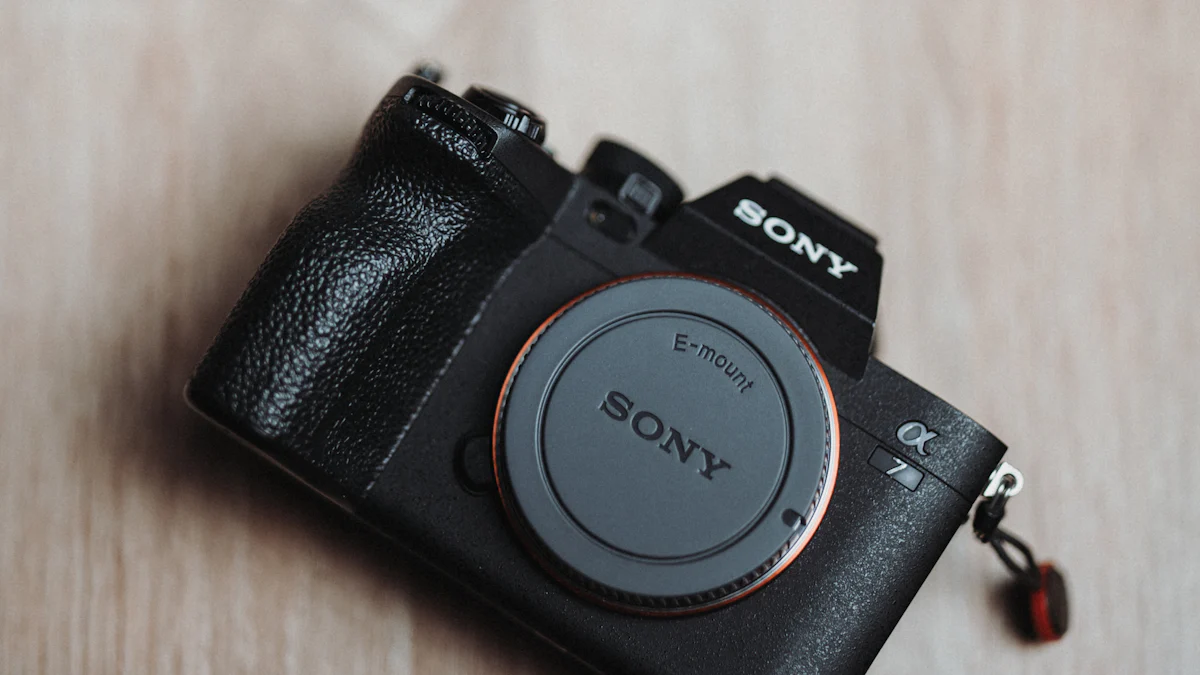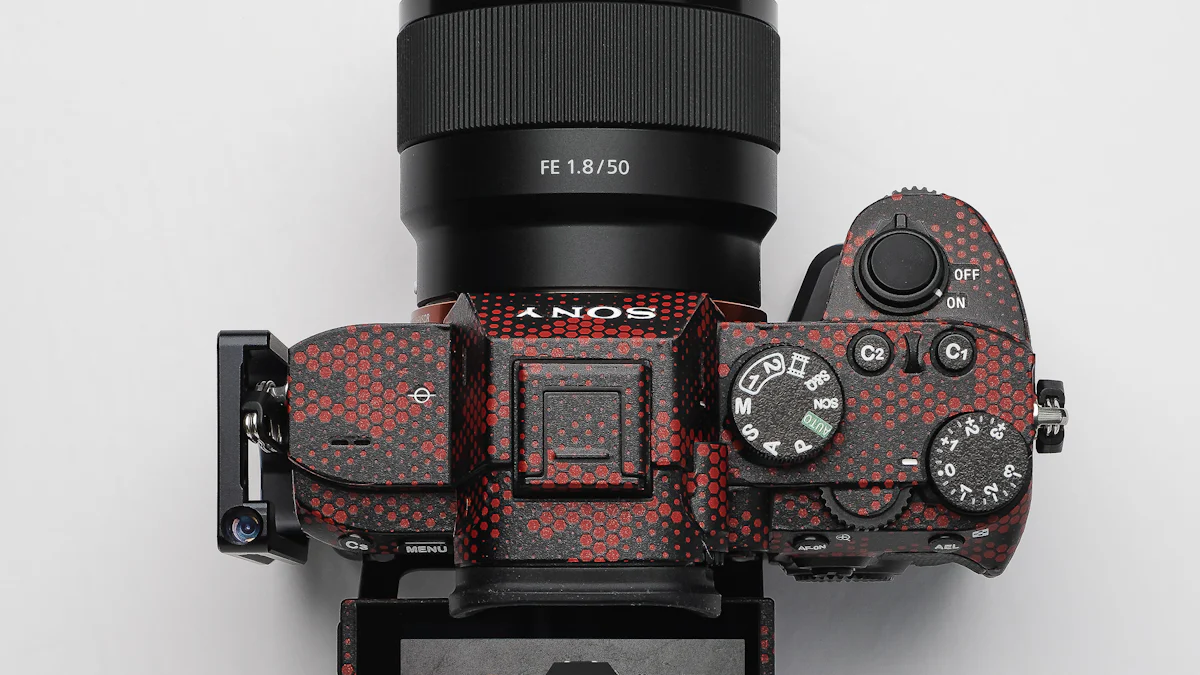A History of Photography in 50 Cameras

Photography has been profoundly shaped by the evolution of cameras, which have been instrumental in capturing moments and preserving memories. The history of photography stretches over 180 years, and a chronological examination of 50 significant cameras highlights both technological advancements and cultural impacts. Each camera model narrates its own unique story. The price of ILC units rose from 37,400 yen in 2012 to 106,000 yen in 2023, indicating the increasing value and demand for advanced cameras. Delving into the history of cameras enhances one's appreciation for the art and science of photography.
The Early Years of Photography
The Daguerreotype Camera
Historical Context and Invention
The early 19th century marked a pivotal moment in photography with the creation of the first permanent photograph by Joseph Nicéphore Niépce. This achievement laid the groundwork for future innovations. The Daguerreotype camera, invented by Louis Daguerre in 1839, became one of the earliest commercially successful cameras. This invention utilized a silver-plated copper sheet to capture images. The process required meticulous preparation and exposure to light.
Impact on Early Photography
The Daguerreotype camera revolutionized how people captured images. Photographers could now produce detailed and accurate representations. This technology gained popularity among portrait studios and artists. The ability to preserve likenesses fascinated the public. The Daguerreotype's introduction marked a significant milestone in the history of photography.
The Calotype Camera
Technological Advancements
The Calotype camera, developed by William Henry Fox Talbot in the 1840s, introduced new advancements. Unlike the Daguerreotype, the Calotype used paper coated with silver iodide. This method allowed photographers to create multiple copies from a single negative. The Calotype process simplified image reproduction and expanded creative possibilities.
Cultural Significance
The Calotype camera played a crucial role in democratizing photography. Artists and amateurs alike embraced this technology. The ability to produce multiple prints made photography more accessible. The Calotype influenced artistic expression and documentation. This camera contributed to the growing popularity of photography as an art form.
The Rise of Portable Cameras

Kodak Brownie
Introduction of Mass Photography
The Kodak Brownie camera emerged in the early 1900s. This camera played a pivotal role in the history of mass photography. Kodak designed the Brownie to be affordable and easy to use. Families and individuals could now capture everyday moments. The camera's simplicity attracted a wide audience. People from various backgrounds embraced photography as a hobby. The Kodak Brownie democratized photography by making it accessible to the masses.
Influence on Amateur Photography
Amateur photographers found inspiration in the Kodak Brownie. This camera allowed non-professionals to explore their creativity. The Kodak Brownie featured a straightforward design. Users could easily operate the camera without technical expertise. Enthusiasts experimented with composition and lighting. The Kodak Brownie encouraged a new wave of amateur photographers. This camera contributed significantly to the growth of personal photography.
Leica I
Revolutionizing 35mm Photography
The Leica I Model A marked a turning point in 35mm photography. Introduced in January 1930, this camera used 35mm cinematograph film. Photographers could capture up to 36 pictures without reloading. The Leica I offered automatic film advancement and shutter cocking mechanisms. These features made the camera ideal for adventurers and photographers in challenging conditions. The Leica I set new standards for portability and efficiency in photography.
Iconic Photographs Captured
Photographers captured iconic images using the Leica I. This camera enabled artists to document significant events and moments. The compact design allowed photographers to work discreetly. The Leica I facilitated the capture of candid and spontaneous shots. Many renowned photographers relied on this camera for its reliability and quality. The Leica I left an indelible mark on the history of photography through its contribution to iconic imagery.
The Era of SLR Cameras
Nikon F
Technological Breakthroughs
The Nikon F camera introduced groundbreaking features in the world of photography. Nikon launched this camera in 1959. The Nikon F offered interchangeable lenses and a modular system. Photographers could customize the camera for various shooting conditions. The camera's durability and precision made it a favorite among professionals. Nikon designed the F with a titanium foil shutter, which enhanced reliability. This innovation set new standards for Single-Lens Reflex (SLR) cameras.
Role in Photojournalism
Photojournalists embraced the Nikon F for its versatility and robustness. The camera became an essential tool for capturing historical events. War photographers relied on the Nikon F during the Vietnam War. The camera's ability to withstand harsh conditions proved invaluable. The Nikon F captured iconic images that shaped public perception. Many photographers considered the Nikon F a trusted companion in the field.
Canon AE-1
Popularization of SLRs
The Canon AE-1 played a pivotal role in popularizing SLR cameras. Canon released this model in 1976. The AE-1 was the first 35mm camera to feature an electronic micro-controller. This innovation simplified camera operation for users. The camera's affordability made it accessible to amateur photographers. Canon's marketing strategies targeted a broad audience. The AE-1's success contributed to the widespread adoption of SLR technology.
Impact on Consumer Photography
The Canon AE-1 revolutionized consumer photography. The camera's ease of use attracted hobbyists and enthusiasts. Canon's design focused on user-friendly features and automation. The AE-1 allowed photographers to experiment with creative techniques. The camera's popularity led to a surge in amateur photography. Many families documented everyday life using the Canon AE-1. This camera left a lasting impact on how people captured memories.
The Digital Revolution

Sony Mavica
Introduction of Digital Imaging
Sony Mavica introduced digital imaging to the consumer market. Sony launched this line of cameras between 1997 and 2001. These cameras used floppy discs for storage. Users could capture JPEG images and MPEG videos. This innovation marked a shift from traditional film photography. The Sony Mavica made digital photography accessible to many people.
Transition from Film to Digital
The Sony Mavica played a crucial role in the transition from film to digital. Photographers appreciated the convenience of digital storage. Floppy discs allowed easy transfer and sharing of images. The camera's features attracted both amateurs and professionals. Many saw the potential for digital technology in everyday photography.
Canon EOS 5D
Full-Frame Digital Photography
The Canon EOS 5D revolutionized full-frame digital photography. Canon released this model in 2005. The camera featured a full-frame sensor, which enhanced image quality. Photographers could achieve greater detail and depth. The Canon EOS 5D set new standards for digital cameras.
Influence on Professional Photography
Professional photographers embraced the Canon EOS 5D. The camera's capabilities expanded creative possibilities. Many used it for fashion, portrait, and landscape photography. The Canon EOS 5D became a favorite for its reliability and performance. This camera influenced the direction of professional photography.
The Modern Era of Photography
Fujifilm X-T3
Blend of Retro Design and Modern Tech
Fujifilm introduced the X-T3 with a unique combination of retro aesthetics and advanced technology. The camera's design pays homage to classic film cameras. Photographers appreciate the tactile dials and robust build. The X-T3 offers cutting-edge features like a high-resolution sensor and fast autofocus. This blend attracts both nostalgic users and tech enthusiasts.
Impact on Mirrorless Camera Market
The X-T3 significantly influenced the mirrorless camera market. Fujifilm's innovation challenged traditional DSLR dominance. The camera's lightweight design and versatility appealed to professionals and amateurs. Many photographers switched to mirrorless systems for convenience and performance. The X-T3 set new standards in image quality and functionality.
Smartphone Cameras
Ubiquity and Accessibility
Smartphone cameras have become ubiquitous in modern life. Manufacturers integrate powerful lenses and sensors into compact devices. People capture moments instantly and share them globally. The accessibility of smartphone cameras democratizes photography. Everyone can document daily experiences without specialized equipment.
Redefining Everyday Photography
Smartphones redefine everyday photography through innovation. Features like AI enhancements and multiple lenses expand creative possibilities. Users experiment with techniques once reserved for professionals. Social media platforms amplify the reach of smartphone photography. The genre of photography evolves as people explore new ways to express themselves visually.
Cameras have transformed photography over 180 years. Each camera model has contributed to technological progress. The evolution of cameras has influenced art and culture. Photography enthusiasts can explore this rich history. Understanding the journey of cameras enhances appreciation for photography. The technological advancements in cameras continue to shape the future. Readers can delve into the stories behind each camera. The impact of cameras on photography remains profound. Exploring the history of cameras offers valuable insights. The journey through time reveals the significance of each innovation.
See Also
Unprecedented Glimpse into the Past: History Reimagined
Egyptian Riches Through the Lens: Pyramids to Cleopatra
Aviation Chronicles: A Comprehensive Journey Through Time

